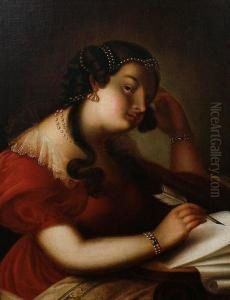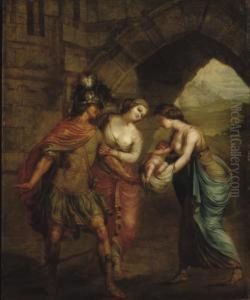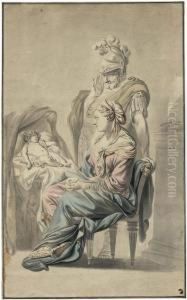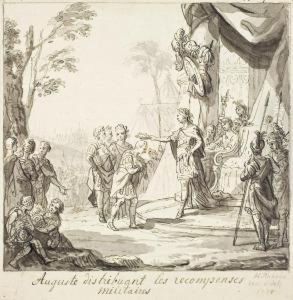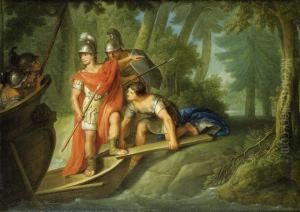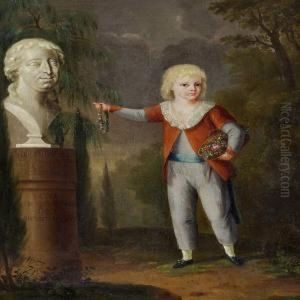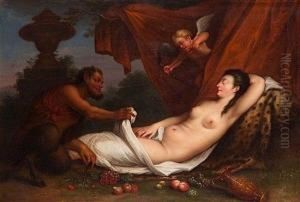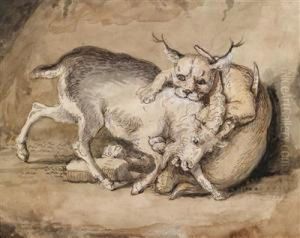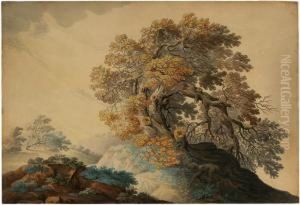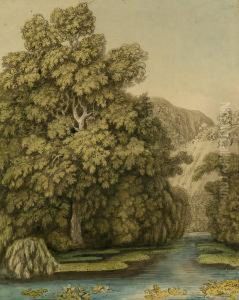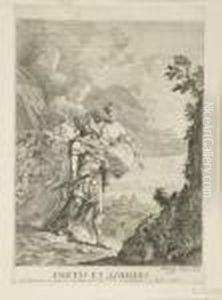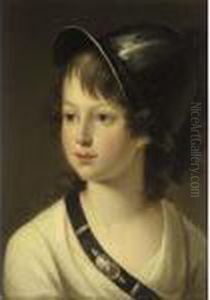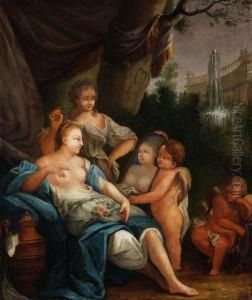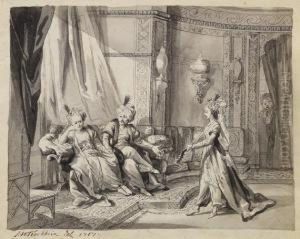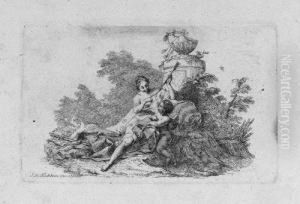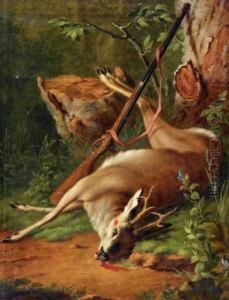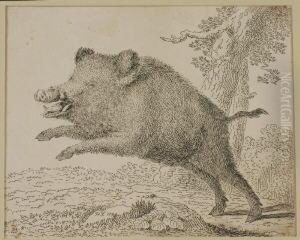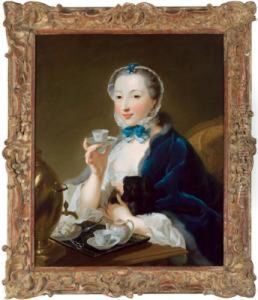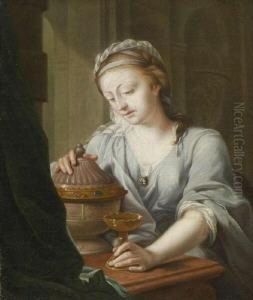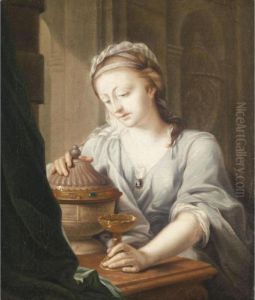Johann Heinrich Ii Tischbein Paintings
Johann Heinrich Wilhelm Tischbein, often referred to as Johann Heinrich II Tischbein to distinguish him from his numerous relatives in the Tischbein family of artists, was a notable German painter during the 18th century. Born on February 15, 1742, in Haina, he was part of a dynasty of painters, and is particularly known for his portraits.
Tischbein began his artistic training under the guidance of his uncle, Johann Heinrich Tischbein the Elder, who was also a well-respected artist of his time. He later continued his education at the Academy of Arts in Kassel and further honed his skills in Paris and Amsterdam, where he was influenced by the works of Dutch masters.
Johann Heinrich II is perhaps most renowned for his portrait of the famous German writer Johann Wolfgang von Goethe, which was painted in 1786-87 during Goethe's Italian Journey. This portrait, known as 'Goethe in the Roman Campagna', is a testament to the close relationship between the artist and the writer, and it remains one of the iconic images of Goethe.
Throughout his career, Tischbein worked in various genres including history painting, but portraiture was where he truly excelled. His style was characterized by a blend of the elegance typical of the late Rococo period and the emerging sensibilities of Neoclassicism. He became the director of the art academy in Naples in 1789, a role that allowed him to influence a generation of artists.
Unfortunately, his time in Naples was marred by the political turmoil of the era, and he returned to Germany in 1799. He spent the latter part of his life in Eutin, Northern Germany, where he continued to paint until his death on August 22, 1808. Today, Tischbein's works are held in high regard and can be found in numerous European art collections.
